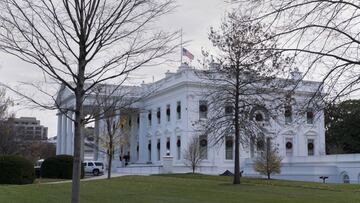What is “safe harbor” day and why is it important in election results?
Tuesday is “safe harbor” day when Congress must respect the results of each state that has certified their vote count according to a 130-year-old US law.

With the “safe harbor” deadline President Trump’s efforts to overturn the election results with his failing legal fight have hit a wall. The US law that establishes the date by which states must have their vote certified so that they cannot be challenged by Congress dates back 130 years. With its passing the legal challenges to the 3 November vote results being heard are unlikely.
Election Day is seen as when Americans choose their next President and the end of the process. This year it seems that the process has dragged on for an eternity with all the unfounded rhetoric about the process having been flawed. However when Americans voted in November, they were choosing which presidential candidate their state would vote for in the Electoral College which will meet on Monday 14 December.
What is the “safe harbor” deadline
“Safe harbor” day is a deadline for states to certify the results of the presidential election. Meeting the deadline is not mandatory but it provides assurance that a state’s results will not be second-guessed by Congress. The safe harbor date falls six days before the meeting of the Electoral College, in which pre-chosen slates of electors formally select the presidential nominee who won the popular vote in their home states.
This year that date is Tuesday 8 December. Trump can still carry on his fight in the courts but judges are likely to say that it is too late to change the results.
Today is Safe Harbor Day. Under federal law, Congress must count the electoral votes from states that act by December 8 to choose their presidential electors — and to resolve any remaining legal disputes over the choice.
— Kyle Griffin (@kylegriffin1) December 8, 2020
Why was the “safe harbor” date created
The Electoral Count Act of 1887 was enacted to avoid another contested election like the one in 1876. That year Democrat Samuel Tilden won the popular vote but ultimately lost the presidency to Republican Rutherford B. Hayes. Results in multiple southern states during Reconstruction were disputed that year. There was no rule in place to handle such a scenario so a commission was formed.
Safe harbor day gives states an incentive to resolve any disputes about the winner “earlier rather than later,” said Justin Levitt, an election law scholar at Loyola Law School in Los Angeles. He says that the framework was set up to prevent a situation where two different results are submitted by the same state.
Normally the governor certifies the group of electors that were chosen for the candidate who won the popular vote. In states with divided governments, where the governorship and the legislature are controlled by different parties, there exists the possibility that the legislature sends its own group of electors. In that instance under the law Congress would be bound to recognize the electors certified by the governor.
Although the law is not a constitutional amendment it was used as reasoning for settling the 2000 election results in Bush v. Gore. This year it was seen as the reasoning for Supreme Court Justice Samuel Alito moving to Tuesday the hearing set for Wednesday for the challenge to the Pennsylvania mail-in ballots.
Happy Safe Harbor Day. Although Trump forces will undoubtedly try to continue re-re-litigating the election, challenges to state election results are effectively over as CRS explains in the snip below. The official Electoral College vote takes place 12/14. pic.twitter.com/XVgatbpoTD
— Joyce Alene (@JoyceWhiteVance) December 8, 2020
Did the states meet the deadline?
Related stories
According to the Associated Press the only state whose result is contested by the Trump campaign that hasn’t met the deadline is Wisconsin. The results of the election will not be affected since Biden won 306 to 232 and Wisconsin has only 10 electoral votes, a candidate needs 270 to win. Trump’s Republican allies have said that the date is meaningless and that they will fight on according to Politico.
What are the remaining deadlines?
The 2020 election has been decided in favor of President-elect Joe Biden but legal challenges can be expected to continue even though they stand little chance to success. However before the 2020 election is in the rearview mirror and the US begins the next four-year drive for the White House there are some important dates coming up.
- 14 December: The 538 electors in the Electoral College will meet in their respective states to cast their votes for the candidate who won the popular vote in the state.
- 6 January: Congress will officially tally the electoral votes during a special joint session.
- 20 January: Inauguration Day established by the Constitution when Biden will be sworn in at noon.


